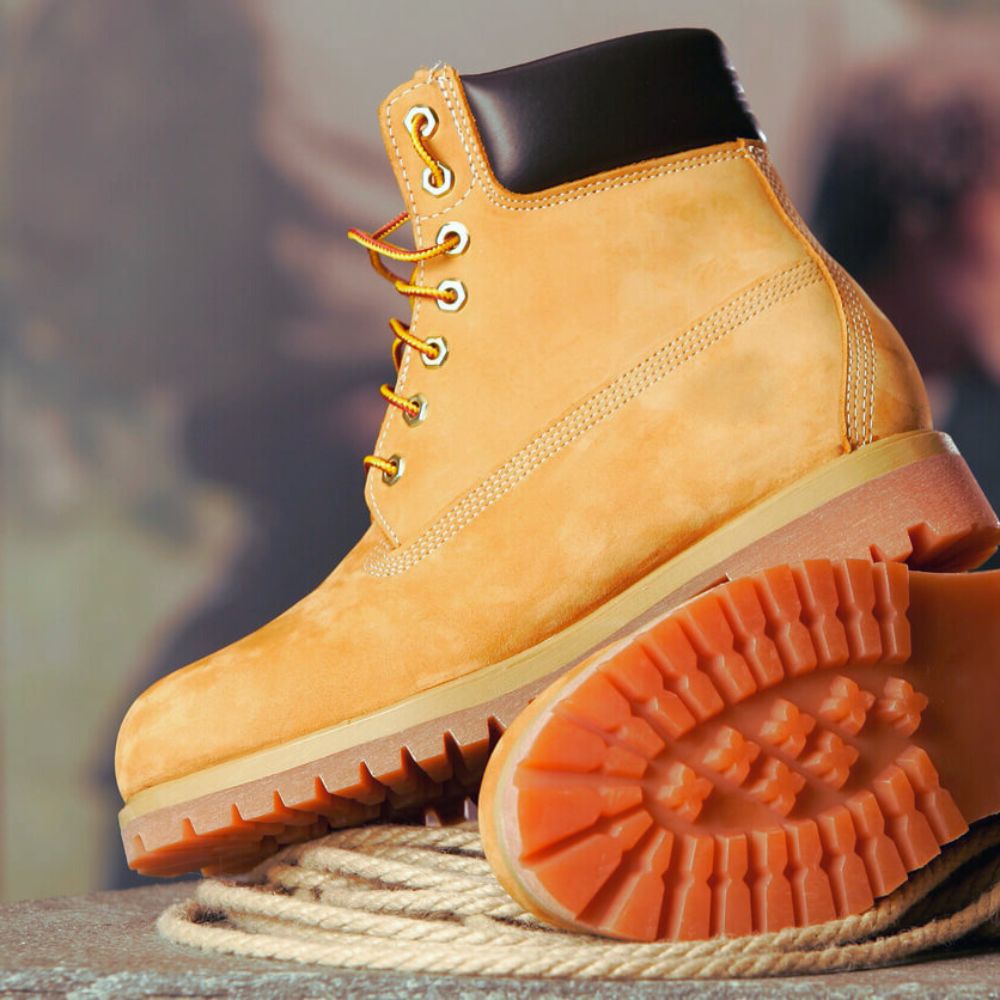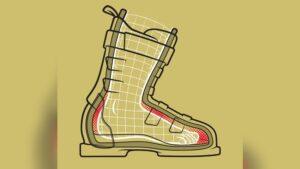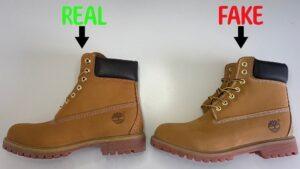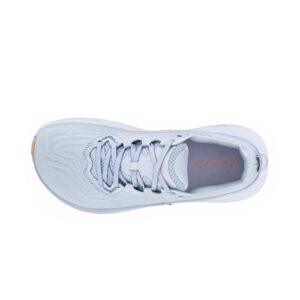Are you thinking about buying Timberland boots but worried about ending up with a fake pair? You’re not alone.
Fake Timberlands look so convincing that even experienced buyers can get tricked. But don’t worry—knowing how to spot a fake Timberland boot can save you money and frustration. In this guide, you’ll learn simple yet powerful tips to check the stitching, materials, logos, soles, and packaging.
Once you know what to look for, you’ll shop with confidence and never fall for counterfeits again. Keep reading to discover the easy tricks that make all the difference.
Stitching And Construction
The stitching and construction of Timberland boots reveal much about their authenticity. Genuine pairs show careful attention to detail. The stitching appears clean, tight, and consistent. The construction feels sturdy and well-made. Fake boots often cut corners here. Their stitching is uneven and sloppy. Materials feel cheap and weak. Examining these key features helps spot fakes easily.
Even Stitching Patterns
Real Timberland boots have even, straight stitching. The thread runs smoothly without gaps or overlaps. Usually, there are four parallel lines on the sides and heel. Fake boots show irregular stitching. Lines may be crooked or spaced unevenly. Some areas have loose threads or missed stitches. This unevenness signals poor craftsmanship.
Leather Quality And Scent
Authentic Timberland boots use premium leather. It feels soft yet firm and has a natural grain. The leather smells fresh with a slight earthy scent. Fake boots use cheaper leather or synthetic materials. Their surface looks plastic-like or overly shiny. The smell can be chemical or unpleasant. Touch and scent are strong indicators of quality.
Heel Firmness
The heel of real Timberlands is solid and firm. It holds shape well and provides good support. Fake boots often have weak heels. They feel soft or bend easily under pressure. This reduces durability and comfort. Press the heel gently to test its firmness. A sturdy heel means a genuine boot.

Credit: www.youtube.com
Logos And Small Details
Checking logos and small details helps spot fake Timberland boots easily. Genuine boots show precise design and craftsmanship. Counterfeits often miss fine elements or have sloppy marks. These small features reveal authenticity clearly. Focus on eyelets, logos, sole markings, and lace tips. Each part should match Timberland’s high standards. Let’s break down what to watch for.
Hexagonal Eyelets
Real Timberland boots have unique hexagonal eyelets. These metal rings hold the laces and fit perfectly. Fake boots often use round or uneven eyelets. The metal on authentic pairs feels sturdy and smooth. Check if the eyelets are aligned and securely attached. Poor finishing or loose eyelets signal a fake.
Timberland Tree Logo
The Timberland tree logo must be clear and detailed. Genuine boots show sharp edges and no blurring. The logo embossing or stitching has no smudges. On fakes, the logo often looks dull or poorly printed. Compare the size and shape with official Timberland images. A distorted or off-center logo means the boots are fake.
Sole Material And Markings
Look closely at the sole’s material and markings. Real Timberland soles use premium rubber with a firm texture. They have clear, deep tread patterns and the Timberland name etched perfectly. Fake soles feel cheap and soft. The tread may be shallow or uneven. Markings on counterfeit soles can be missing or blurry. Authentic soles last longer and provide solid grip.
Lace Tip Quality
Examine the lace tips carefully. Genuine Timberland boots use metal or hard plastic tips. These tips are smooth and well-finished. Fake boots often have cheap, soft, or uneven lace tips. The color might fade quickly or peel off. Good lace tips add durability and style. Poor-quality tips are a sign of counterfeit boots.
Packaging And Labeling
Packaging and labeling offer key clues to spot fake Timberland boots. Authentic Timberland boots come with precise and consistent packaging details. Counterfeit products often show errors in these areas. Examining the box and labels closely can reveal discrepancies. This helps avoid buying fake boots.
Box Label Accuracy
The box label on real Timberland boots is clear and sharp. It includes detailed product information such as size, color, and style code. Fake boxes often have blurry printing or misspelled words. Check for correct Timberland logos and trademarks on the label. Authentic labels use high-quality paper and inks without smudges.
Matching Serial Numbers
Every genuine Timberland boot has a unique serial number inside the shoe. This number should match the one on the box label exactly. Fake boots may have missing or mismatched serial numbers. Verify that the numbers align perfectly, including letters and digits. A mismatch signals a counterfeit product.
Typography And Website Authenticity
Timberland uses consistent typography on its packaging and labels. The font style, size, and spacing are uniform across all genuine products. Fake items often use incorrect fonts or uneven spacing. Check the official Timberland website for reference images. Authentic packaging also includes the website URL printed correctly without errors.
Material Feel And Smell
The material feel and smell of Timberland boots reveal much about their authenticity. Genuine Timberlands use high-quality leather that feels soft yet firm. The texture is smooth with natural grain patterns. Fake boots often use cheap leather or synthetic materials that feel rough or plastic-like.
The scent of real Timberland boots is distinctive. They carry the natural smell of genuine leather with a hint of tanning chemicals. Counterfeit boots usually emit a strong, unpleasant chemical odor or a plastic-like smell. This difference in smell can help you identify fake Timberlands quickly.
Touch The Leather Texture
Real Timberland leather feels flexible and sturdy. It bends without cracking or peeling. Fake leather often feels stiff or overly soft and may crack when bent. Run your fingers over the surface. Genuine leather shows natural pores and slight imperfections. Fake leather has an even, plastic-like surface.
Check The Boot’s Weight
Authentic Timberlands have a solid, balanced weight. The materials add heft without feeling heavy. Fake boots may feel lighter due to cheaper materials. Hold both boots to compare the weight. The lighter pair is likely a fake.
Smell For Natural Leather
Take a close sniff inside the boot. Genuine leather has a warm, earthy scent. The smell is subtle, not overpowering. Fake boots often smell like glue, chemicals, or plastic. This harsh smell is a clear sign of counterfeit materials.
Common Fake Characteristics
Fake Timberland boots often share common flaws that make them easy to spot. These flaws affect the boot’s look, feel, and durability. Knowing these fake characteristics helps avoid buying poor-quality products. Pay attention to details like stitching, soles, and overall build. Genuine Timberland boots show high craftsmanship and quality materials. Counterfeits often cut corners to save costs.
Uneven Stitching
Real Timberland boots have neat, even stitching. The thread is tight and consistent. Fake boots show uneven stitching with loose threads. The stitching lines may wobble or have gaps. This flaw weakens the boot’s structure. Uneven stitching also looks sloppy and cheap. Always check the seams carefully for uniformity.
Cheap Rubber Soles
Authentic Timberlands use thick, durable rubber soles. They provide strong grip and last long. Fake boots use thin, low-quality rubber soles. These soles wear out quickly and feel hard or brittle. Cheap soles may peel or crack after little use. The tread pattern on fakes can look blurry or shallow. Inspect the sole’s texture and thickness closely.
Flimsy Construction
Genuine Timberland boots feel solid and well-built. The materials are sturdy and heavy. Fake versions feel light and weak. They bend or crease easily in wrong places. The eyelets, laces, and padding may look cheap. Flimsy construction leads to poor support and fast damage. Hold the boot and test its strength before buying.

Credit: legitgrails.com

Credit: legitgrails.com
Frequently Asked Questions
How To Tell If Timberland Boots Are Fake?
Check Timberland boots for even stitching, premium leather, firm heels, clear logos, hexagonal eyelets, matching serial numbers, and quality rubber soles. Fake boots show uneven stitches, cheap materials, blurry logos, circular eyelets, and flimsy construction. Authentic boots also have a distinct leather scent and feel sturdy.
What Is The Green Dot On Timberland Boots?
The green dot on Timberland boots indicates eco-friendly materials used in production. It highlights the brand’s commitment to sustainability.
Do Timberland Boots Have A Serial Number?
Yes, Timberland boots have a serial number on the inner label. Match it with the box label to verify authenticity.
How To Know If Boots Are Original?
Check stitching for evenness and quality materials with a distinct leather smell. Verify hexagonal eyelets and sharp Timberland logos. Confirm serial numbers inside boots match box labels. Feel the sturdy heel and inspect sole quality for consistent texture and embossed logos.
Conclusion
Spotting fake Timberland boots takes careful attention to detail. Check stitching for evenness and quality materials. Real boots have firm heels and distinct logos. Smell and feel also help; authentic boots smell natural and feel sturdy. Compare serial numbers on labels for a final check.
Taking these steps protects your purchase and ensures you get genuine Timberlands. Stay informed and shop wisely to avoid fakes.

Madison Clark is a footwear expert and the voice behind MyStyleGrid.com. She specializes in honest shoe reviews, style tips, and practical guides to help readers find the perfect pair for any occasion. With years of experience in blogging and content creation, Madison makes footwear knowledge simple, stylish, and easy to follow.







